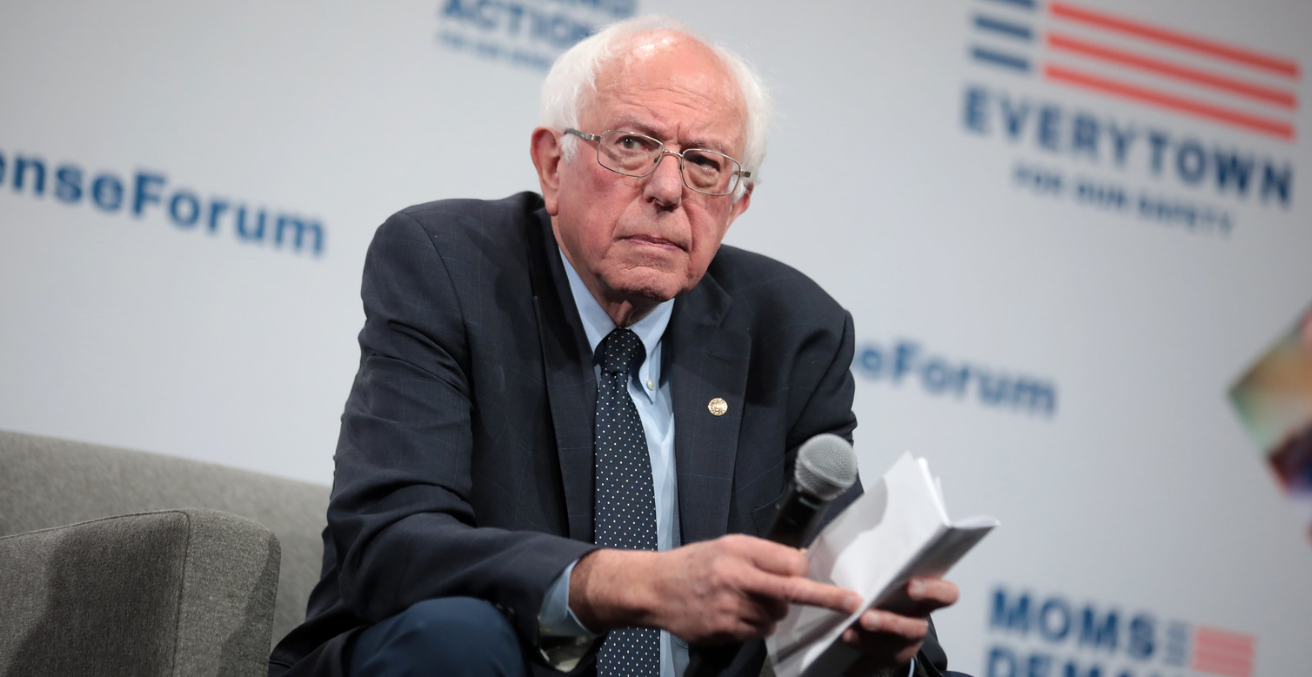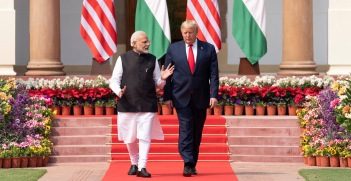Joe Biden’s Win in South Carolina Is Unlikely to Halt Bernie’s Momentum

What is at stake this year in American politics is enormous. In the primary elections, looking beyond the establishment may be the key to beating Donald Trump in November.
For some Americans, the most important question in 2020 is what candidate is best placed to beat Trump. For others, what is remarkable is that America has surprisingly emerged as a place where social democratic ideas are generating new excitement and popularity. However, for those of us whose business it is to follow US politics, the “math” (as Americans say) of their peculiar electoral system needs to be closely followed again as the road to winning the Democratic Party nomination, and then the general election, is more complicated than just being the most popular candidate.
For all of 2019, Joe Biden claimed he was the best-placed Democrat to beat Trump in the November 2020 presidential election. This claim seemed reasonable in theory, until you actually listened to Biden meeting voters or debating his Democratic opponents. Biden on the stump or the debate stage is often a verbal train wreck: he has an uncanny ability to start any sentence with the opposite of what he is trying to say, and then needs to spend the rest of the sentence explaining what he meant to say.
Competing against the slick talking Peter Buttigieg and the clear and passionate Bernie Sanders, Biden has looked unimpressive. The early results in Iowa and New Hampshire reflected this. However, after the South Carolina primary this weekend, Joe Biden is declaring himself the “comeback kid.” The math tells us that Biden has once again spoken too soon. Only 63 delegates were at stake in South Carolina, and although Biden won a handsome share of these, it is important to know that 1,357 delegates are up for grabs this week in the “Super Tuesday” primaries, which are held across 14 states.
For all the hoopla to date, only four percent of the delegates have been up for grabs so far. On “Super Tuesday,” a third of all pledged delegates are up for grabs. Under the fairly complicated party rules, a Democratic candidate will need 1,991 pledged delegates to secure the nomination at the July Democratic National Convention in Milwaukee, Wisconsin. If a candidate fails to get half of the overall pledged delegates, then things get really complicated and we will all hear a lot about “super delegates” and a “brokered convention.” The only candidate that looks likely to prevent a brokered convention from occurring is Bernie Sanders, who will need to win big this Tuesday in America, and in the weeks ahead to secure the nomination before July. And that is only the first part of the challenge; the more crucial concern for many of us is whether Sanders can beat Trump.
Two schools of thought tend to converge around Sanders and his prospects for victory against President Trump in November. First, some are nervous. While Sanders first won election to the U.S. Senate in 2006, it was his insurgent candidacy against establishment candidate Hillary Clinton in 2016 that brought him and his supporters into the national spotlight. Indeed, Sanders secured just over 43 percent of the vote amongst registered Democrats in this 2016 primary contest, with Hillary securing over 55 percent. Given that many thought Hillary would easily secure the nomination, these were strong numbers for a candidate promising, as he does today, “a political revolution” which aims to target wealthy billionaires and empower the working class. Income inequality in the United States has received much attention in recent years and Sanders is successfully tapping into the anxieties of vulnerable Americans.
Supporting Sanders is a diverse coalition of young voters and racial minorities attracted to his promises of universal health care, an increased minimum wage, and free college tuition. Some fear that support for Sanders has a so-called “ceiling” which will prevent him from appealing to moderates and independents on election day. Recently, James Carville, a seasoned commentator who played a big part in Bill Clinton’s electoral success, said he is “scared to death” of a Sanders candidacy and, although acknowledging he would vote for him over President Trump, nonetheless described him as an “ideological fanatic.”
Not all establishment Democrats use such blunt language, but Carville points to the broader fears of the Democratic establishment. Sanders has limited connections to the Democratic Party (he was elected to the Senate as an independent), and has described himself as a “socialist” or “democratic socialist,” spending a lifetime pursuing progressive causes. In the general election, President Trump will make much of the “socialist” label, digging up comments from the senator’s past that could alienate more independent voters. His recent comments praising aspects of Fidel Castro’s literacy program are the exact type of comments that will animate Trump supporters and make Democratic centrists nervous.
However, the second school of thought holds that these concerns need to be balanced against polling data and the missteps of establishment candidates. While Democratic elites harbour concerns about Sanders, Democratic voters may not. The latest polling suggests that Sanders enjoys a clear plurality of support with 29.5 percent of registered Democrats behind him; Joe Biden is the next closest with 18 percent support. Given that Sanders is polling very well in the big Super Tuesday states, especially in California where 415 pledged delegates are up for grabs, it is likely that he will cement his place as the likely front-runner following these primary contests.
It is also noteworthy that in a recent Monmouth University Poll, which focussed not just on voting intention but on the overall attitude of Democratic voters towards the candidates, Sanders does much better than the rest of the field. He was given a net favourability rating of 53 percent (72 percent favourable and 19 percent unfavourable), suggesting he may be a much less polarising figure among Democrats than other candidates (Mike Bloomberg, interestingly, had a net favourability rating of only 14 percent). This gives some credence to Peter Beinart’s observation that “Among ordinary Democrats, Sanders is strikingly popular, even with voters who favour his rivals.”
Nationally, the leading Democratic candidates, including Sanders, Biden, and Bloomberg, are polling better than President Trump. But this doesn’t mean victory is guaranteed. Much will depend on voter turn-out and the attitudes of those in key swing states. According to a recent Quinnipiac Poll, which focusses specifically on attitudes in those key Rust Belt states of Wisconsin, Pennsylvania, and Michigan, the picture is mixed. Trump leads in Wisconsin, but trails Sanders (and all Democratic candidates) in Pennsylvania and Michigan. Some of the poll numbers in these states are tight and within a margin of error, so few commentators in the U.S. today are prepared to make bold predictions about who will win in November.
What these poll numbers suggest, though, is that Sanders has as much chance against President Trump as the other candidates in the Democratic field. The election of Trump demonstrates, in an age of growing distrust of political/media elites and where outsiders can claim to speak for the neglected masses, anything is possible.
Back to the math, if Sanders secures a plurality of the required delegates to become the nominee, it would be a brave party – perhaps also a reckless one – to deny him the opportunity to take on President Trump. The establishment candidate, after all, lost in 2016. Sanders is currently best placed to be the Democratic Party nominee and we would not be surprised if this is the year America elects a socialist president.
Brendon O’Connor is jointly appointed between the US Studies Centre and the Faculty of Arts and Social Sciences at the University of Sydney as an Associate Professor in American Politics. Danny Cooper is a lecturer at Griffith University.
This article is published under a Creative Commons Licence and may be republished with attribution.





